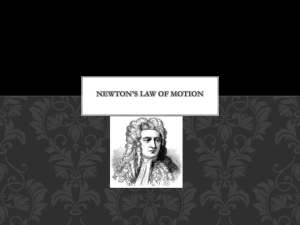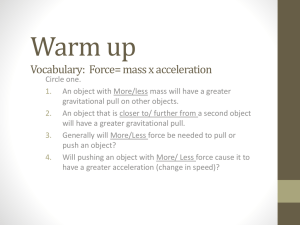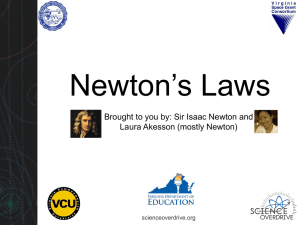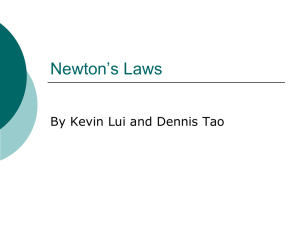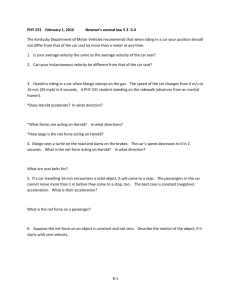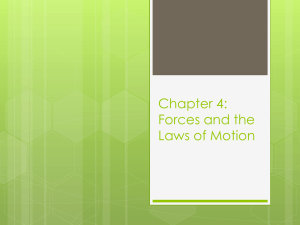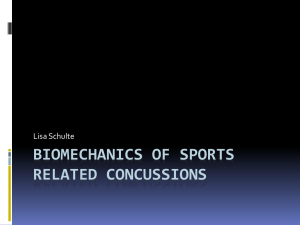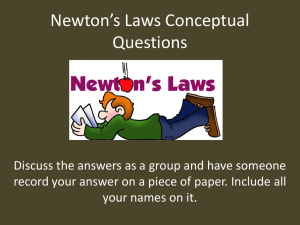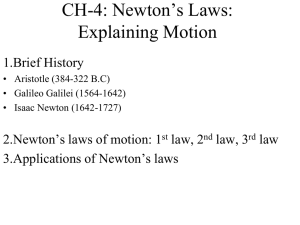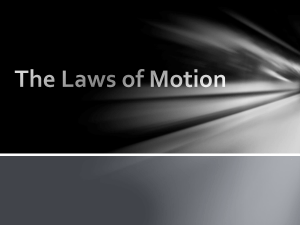Chapter 4 - Sharyland ISD
advertisement
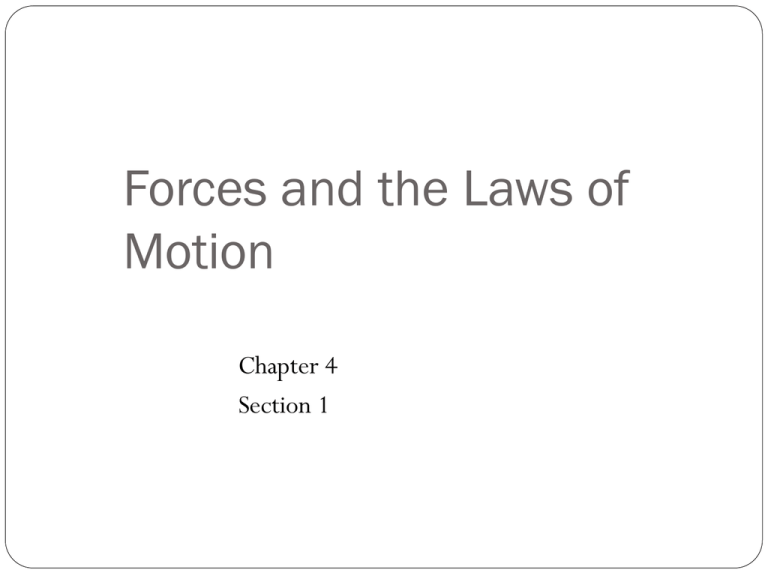
Forces and the Laws of Motion Chapter 4 Section 1 Changes in Motion : FORCE Force is the cause of an acceleration or the change in an object’s velocity Force can cause objects to Start Moving Stop Moving Change Direction Notice that each of these cases involves a change in velocity (this is acceleration). Changes in Motion: FORCE The SI unit of Force is the Newton named after Sir Isaac Newton. The symbol for Newton is N. Force is measured in Newton's. Force is a Vector Quantity. Force is equal to Mass times Acceleration. 1 N is equal to 1 kg x 1 m/s2 Forces can act through contact or at a distance. Contact Force – force from the physical contact of two objects Ex: catch a ball, its motion stops Pull on a spring, it stretches Field Force – does not involve physical contact between two objects. Ex: the force of gravity Electrical charges attraction/repulsion Free-body Diagrams Free – body diagrams isolate one object and the forces acting on it. Shows only the forces acting on the object of interest. All forces are assumed to act on a single point at the center of the object. Section Review pg. 128 Work on problems 1-6 Newton’s First Law Chapter 4 Section 4-2 Newton’s First Law of Motion Also referred to as the Law of Inertia. Inertia is the tendency of an object to maintain its state of motion. Mass is a measurement of inertia. States that an object at rest stays at rest and an object in motion stays in motion with constant velocity (constant speed in a straight line) unless the object experiences a net external force. When the net external force of an object is zero, its acceleration is zero. Acceleration is determined by net external force. The Net External Force is the vector sum of all the forces acting on an object. We find X components and Y components. Net External Force is the Resultant Force. Objects that are at rest or moving with constant velocity are said to be in equilibrium. Equilibrium means there is no change in a body’s motion. Let’s Practice… Net External Force – Practice 4A Pg. 133 Chapter 4 Section 3 Newton’s Second and Third Laws Newton’s 2nd Law relates force, mass, and acceleration. Net External Force = Mass States : Acceleration is produced when a Force acts on a Mass. The greater the mass of the object you are trying to accelerate, the greater the amount of force needed to do so. X Acceleration In equation form we have : ∑F = ma ∑F represents the vector sum of all external forces acting on an object. Overview of Net External Force Overview of Net External Force Check for Understanding What acceleration will result when a 12-N net force is applied to a 3-kg object? Answer: ∑F = ma → 12N = 3kg x a 12N / 3kg = a 4 m/s2 = a Try this one on your own… A net force of 16 N causes a mass to accelerate at the rate of 5 m/s2. Determine the mass. Answer: ∑F = ma → 16N = m x 5 m/s2 16N / 5m/s2 = m 3.2 kg = m Sample 4B Pg. 137 Newton’s Third Law Forces always exist in pairs. For every action, there is an equal and opposite reaction. Action =Ghost’s hand’s force exerted on wall. Reaction = Wall’s force exerted on Ghost’s hand. Check for Understanding… If a book is on a table what are the action and reaction forces involved? Answer: Action : Force the book exerts on table. Reaction : Force the table exerts on the book. Newton’s 3rd Law Examples

